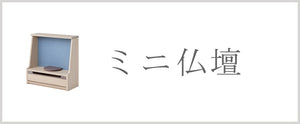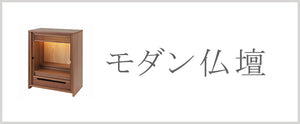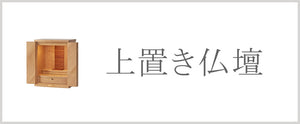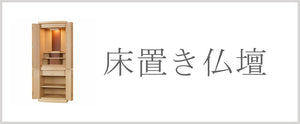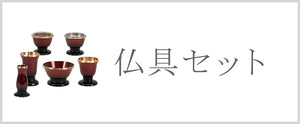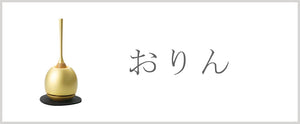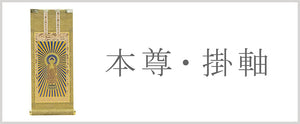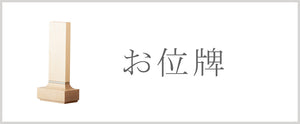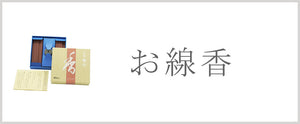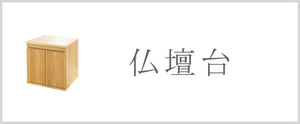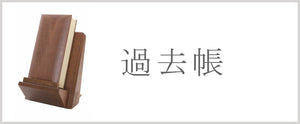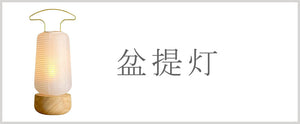Last updated:
Release date:
When do you close the door to the Buddhist altar?
This is a question we frequently receive from people considering purchasing a Buddhist altar. It's the first time they've prepared one themselves. Even small details like this can cause doubts and anxiety.
Generally, it is fine to leave the Buddhist altar open all the time.
However, there are also occasions when it is appropriate to close the doors. This time, we will explain how to open and close the doors of a Buddhist altar.
Why does the Buddhist altar have a door?

Many people think of Buddhist altars as altars for ancestors, where memorial tablets and photographs of the deceased are displayed.
In addition to these roles, the Buddhist altar is also a "small temple in the home" where Buddha is enshrined.
As proof of this, traditional gold Buddhist altars and Karaki Buddhist altars are made with a structure that resembles a miniature version of a temple's main hall.
The main hall of the temple is divided into an inner sanctuary and an outer sanctuary, and there are shoji screens separating the two areas.
There is also a shutter at the boundary between the main hall and the outside.
- <What are the inner and outer sanctuaries?>
-
・Inner sanctuary
Located in the center of the main hall, this is where the principal image and the founder are enshrined. It is the most important space in the temple and is off-limits to the general public.
-
・Outer sanctuary
It is located outside the inner sanctuary and is the place where ordinary people worship. In this way, the door of the Butsudan in a small temple has the role of separating the special place where the Buddha resides from the public.
In this way, the doors of the Buddhist altar in a small temple serve the role of separating the special place where the Buddha resides from people.
*In the case of furniture-style modern Buddhist altars, many are designed to match the interior of Western-style rooms, so some types do not have shoji screens. Even if the altar does not have shoji screens, it is still a small temple for the family.
Three patterns for opening and closing the Buddhist altar door
Generally, there is no problem with leaving the Buddhist altar open all the time, but here we will introduce three typical patterns for opening and closing the doors.
None of them are wrong, so choose the one that suits your home best.
1. Open the door in the morning and close it in the evening
It's a polite and traditional way.
Some people may think that this is the ideal Buddhist memorial service.
In the morning, open the door and pray in front of the Buddha, saying, "Please protect me so that I can live safely today," and "I'm leaving." In the evening, close the door with your hands together, giving thanks and saying, "I was able to end the day peacefully."
2. Always keep it open
There are probably many people who have never seen the doors of a Buddhist altar closed.
This is also a common way of worshiping at a home Buddhist altar.
People who have recently lost a family member tend to keep the door open, as it gives them a sense of security that the deceased is always watching over them.
3. Keep your hands closed except when praying.
Some buyers of modern furniture-style Buddhist altars only open the doors when they pray.
For example, if you have pets, you should be concerned about their safety.
Others who adopt this method believe that the atmosphere of the room matches better with the doors closed.
In fact, many modern furniture-style Buddhist altars have various designs that are elaborately designed even when the doors are closed.
Time to close the altar door
Basically, there are no complicated rules for opening and closing the Buddhist altar, so it is fine to do it in a way that suits each household.
On the other hand, there are times when it is better to close the doors of the Buddhist altar.
Period up to 49 days
When a family member passes away, the doors of the Buddhist altar are often kept closed until the 49th day.
In the meantime, memorial services will be held at a temporary white wooden altar.
However, there are regional differences, so if you are worried, it is best to check with the temple.
When cleaning a room with a Buddhist altar, such as a Buddhist altar room or living room
In addition to the Buddhist significance, another good time to close the doors of the Buddhist altar is when cleaning.
The Buddhist altar contains the principal image, memorial tablets, and various other Buddhist altar implements.
Once dust gets in, you may find that even though you've just finished cleaning the room, you'll have to clean the Buddhist altar next.
Close the door before you start cleaning, and open it once the room is clean.
In such cases, keep the door of the Buddhist altar open.
So, is there a time when you should open the doors of the Buddhist altar?
It is said that it is good to proactively open the door of the Buddhist altar in the following situations.
During a memorial service
Of course, the doors of the Buddhist altar must be opened during memorial services.
Even if you cannot attend the temple, this day, which is important to Buddhism and ancestors, is a good time to open the doors of the Buddhist altar.
When family and relatives gather
The Buddhist altar is a "little temple in the home" and also a place where you can meet your ancestors.
It is a good idea to open the doors of the Buddhist altar on auspicious days for the family, such as Obon, New Year's, entrance ceremonies, and weddings.
*In some areas, it is customary to close the Buddhist altar during the Obon period instead of putting out the spirit shelf.
Recently, there are also Buddhist altars without doors...

Mini Buddhist Altar HAJIME
So far, we have been assuming that Buddhist altars have doors, but recently there have also been furniture-style modern Buddhist altars that are "doorless."
Taking advantage of the lack of doors, this type has been designed to be more suitable for interior decoration than previous models, and has been gaining attention in recent years as a Buddhist altar for "home memorials" and "personal memorials."
The Buddhist altar is both a "small temple" and a "place to meet the deceased." The door can be opened and closed freely.
The Buddha is always present on the other side of the doors of the Buddhist altar, and you can also meet your ancestors.
There are no rules for opening and closing the door. In the past, it was common for households to leave it open all the time or to open it in the morning and close it in the evening, but recently, due to changes in housing environments and religious views, more and more people are opening it only when praying.
It is best to close the door "up until the 49th day" and "when cleaning the room." At other times, you can freely use a method that suits your lifestyle.
Nagomi Kobo TOP page is here >


